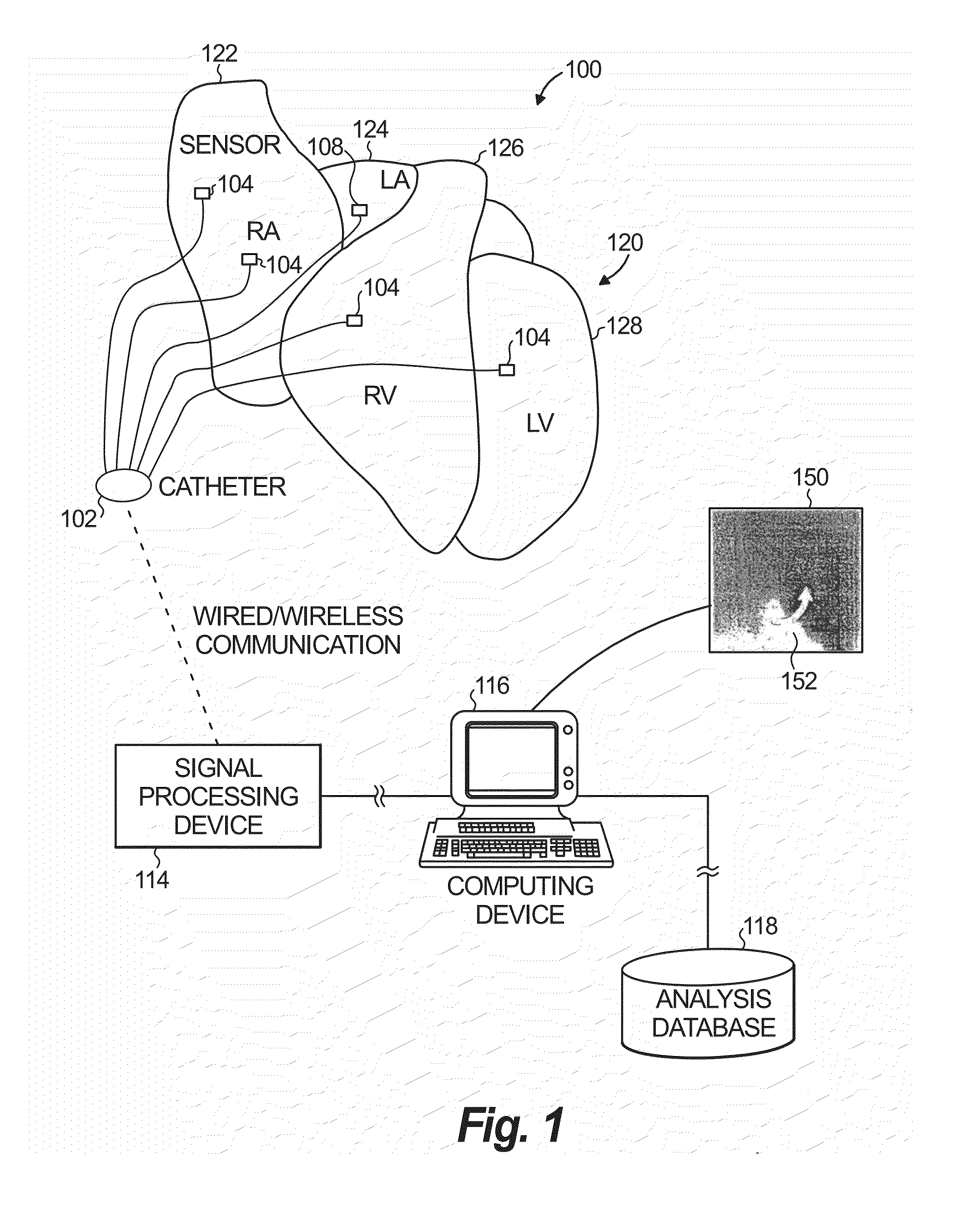System and method to identify sources associated with biological rhythm disorders
a biological rhythm and source technology, applied in the field of biological rhythm disorders, can solve the problems of significant morbidity and death in the world, inappropriate sinus tachycardia or sinus node reentry, and difficult treatment of heart rhythm disorders, especially complex rhythm disorders of af, vf and polymorphic v
- Summary
- Abstract
- Description
- Claims
- Application Information
AI Technical Summary
Benefits of technology
Problems solved by technology
Method used
Image
Examples
Embodiment Construction
[0024]A system and method for defining drivers of sources associated with heart rhythm disorders are disclosed herein. In the following description, for the purposes of explanation, numerous specific details are set forth in order to provide a thorough understanding of example embodiments or aspects. It will be evident, however, to one skilled in the art, that an example embodiment may be practiced without all of the disclosed specific details.
[0025]The present disclosure is applicable to defining various drivers of sources associated with heart rhythm disorders. Drivers may be represented by persistent rotational activation around a center that may show movement (‘meander’ or ‘precession’), or persistently repetitive activation from an origin. The disclosure can also be applied to other biological rhythm disorders, such as neurological seizures, esophageal spasms, bladder instability, irritable bowel syndrome, and other biological disorders for which biological activation informati...
PUM
 Login to View More
Login to View More Abstract
Description
Claims
Application Information
 Login to View More
Login to View More - R&D
- Intellectual Property
- Life Sciences
- Materials
- Tech Scout
- Unparalleled Data Quality
- Higher Quality Content
- 60% Fewer Hallucinations
Browse by: Latest US Patents, China's latest patents, Technical Efficacy Thesaurus, Application Domain, Technology Topic, Popular Technical Reports.
© 2025 PatSnap. All rights reserved.Legal|Privacy policy|Modern Slavery Act Transparency Statement|Sitemap|About US| Contact US: help@patsnap.com



